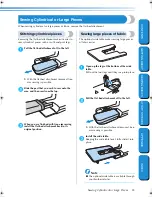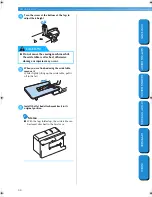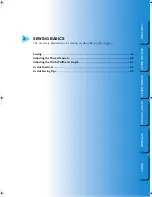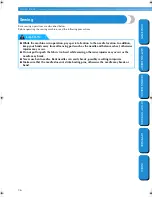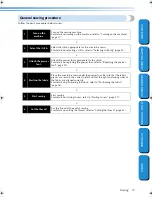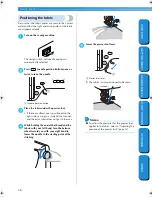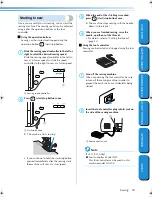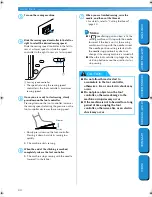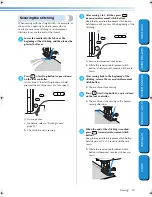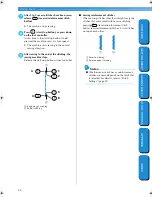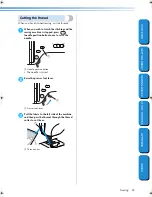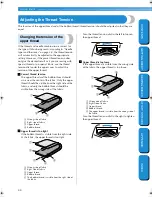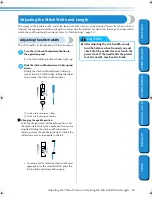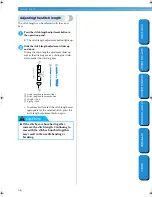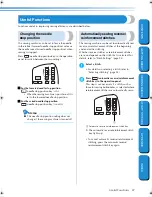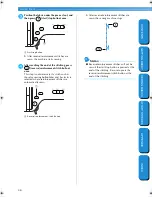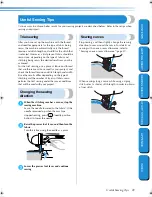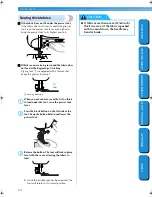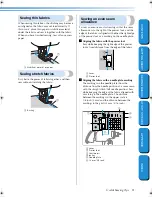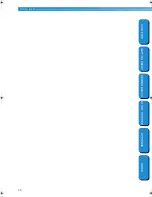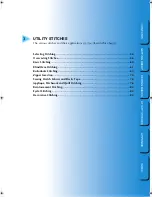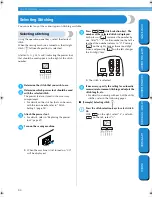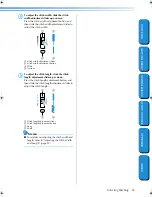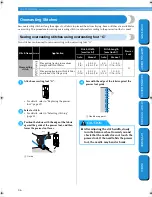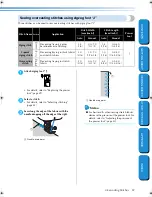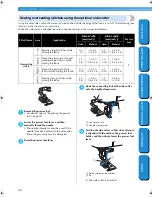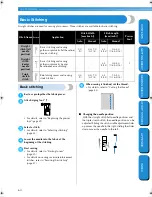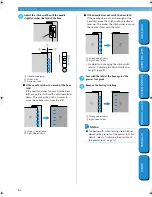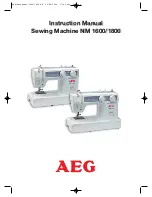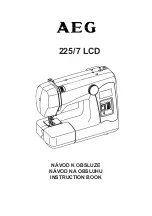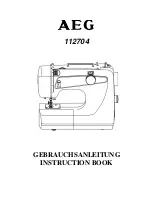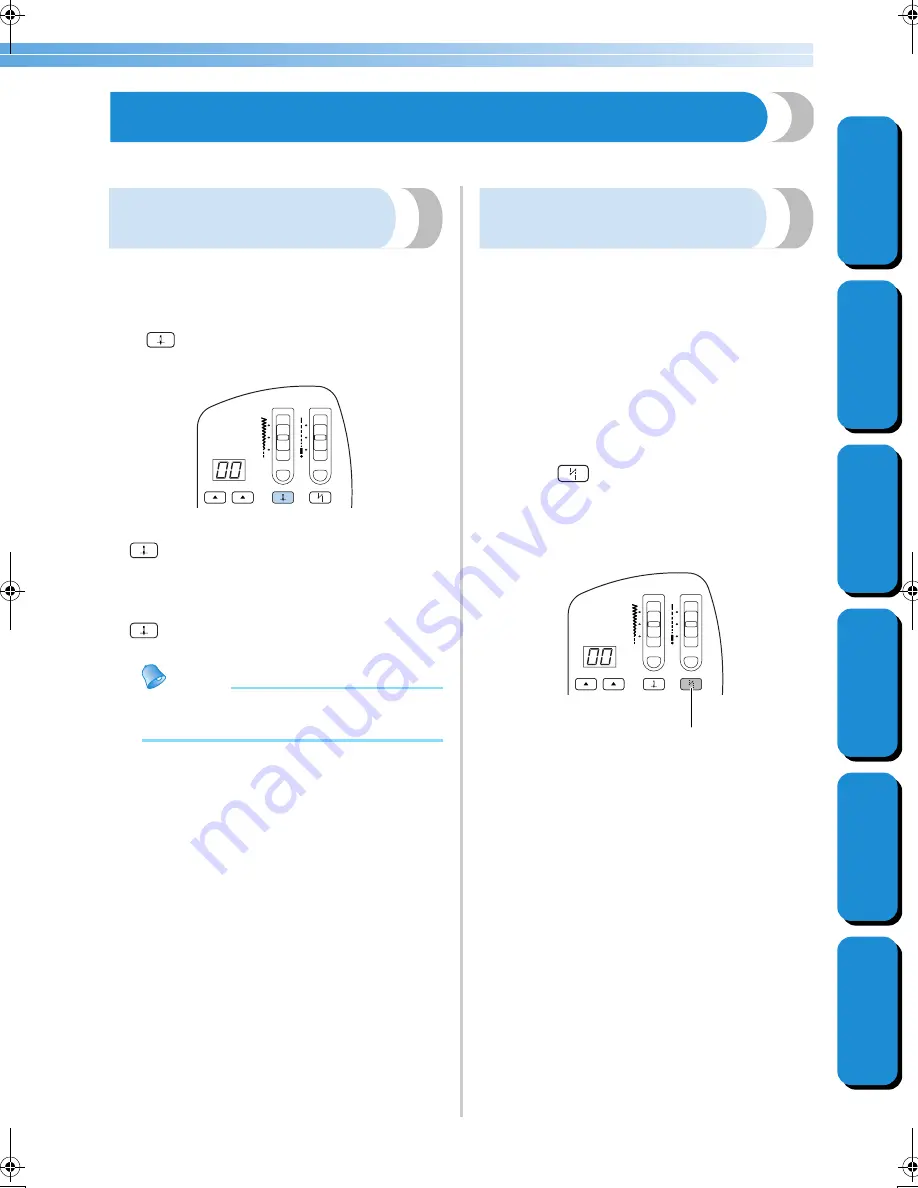
Useful Functions
47
GETTING READ
Y
CONTENTS
SEWING BASICS
U
T
IL
IT
Y
S
T
ITCHES
APPENDIX
INDEX
Useful Functions
Functions useful in improving sewing efficiency are described below.
Changing the needle
stop position
The sewing machine can be set to leave the needle
in the fabric (lowered needle stop position) or leave
the needle raised (raised needle stop position) when
sewing is stopped.
Press
(needle stop position key) in the operation
panel to switch between the two settings.
■
For the lowered needle stop position
(needle stop position key) is lit.
• When the sewing machine is purchased, it is
set to the lowered needle stop position.
■
For the raised needle stop position
(needle stop position key) is not lit.
Memo
●
The needle stop position setting does not
change if the sewing machine is turned off.
Automatically sewing reverse/
reinforcement stitches
The sewing machine can be set to automatically sew
reverse or reinforcement stitches at the beginning
and end of the stitching.
Whether reverse stitches or reinforcement stitches
are sewn depends on the stitch that is selected. For
details, refer to “Stitch Settings” (page 92).
1
Select a stitch.
• For details on selecting a stitch, refer to
“Selecting stitching” (page 54).
2
Press
(automatic
reverse/reinforcement
stitch key) in the operation panel.
This step is not necessary if a stitch, such as
those for sewing buttonholes, is selected where
reinforcement stitches are automatically sewn.
1
Automatic reverse/reinforcement stitch key
X
The automatic reverse/reinforcement stitch
key lights up.
• To cancel automatic reverse/reinforcement
stitching, press the automatic reverse/
reinforcement stitch key again.
1
F0_brotherE.book Page 47 Wednesday, May 21, 2003 11:38 AM

